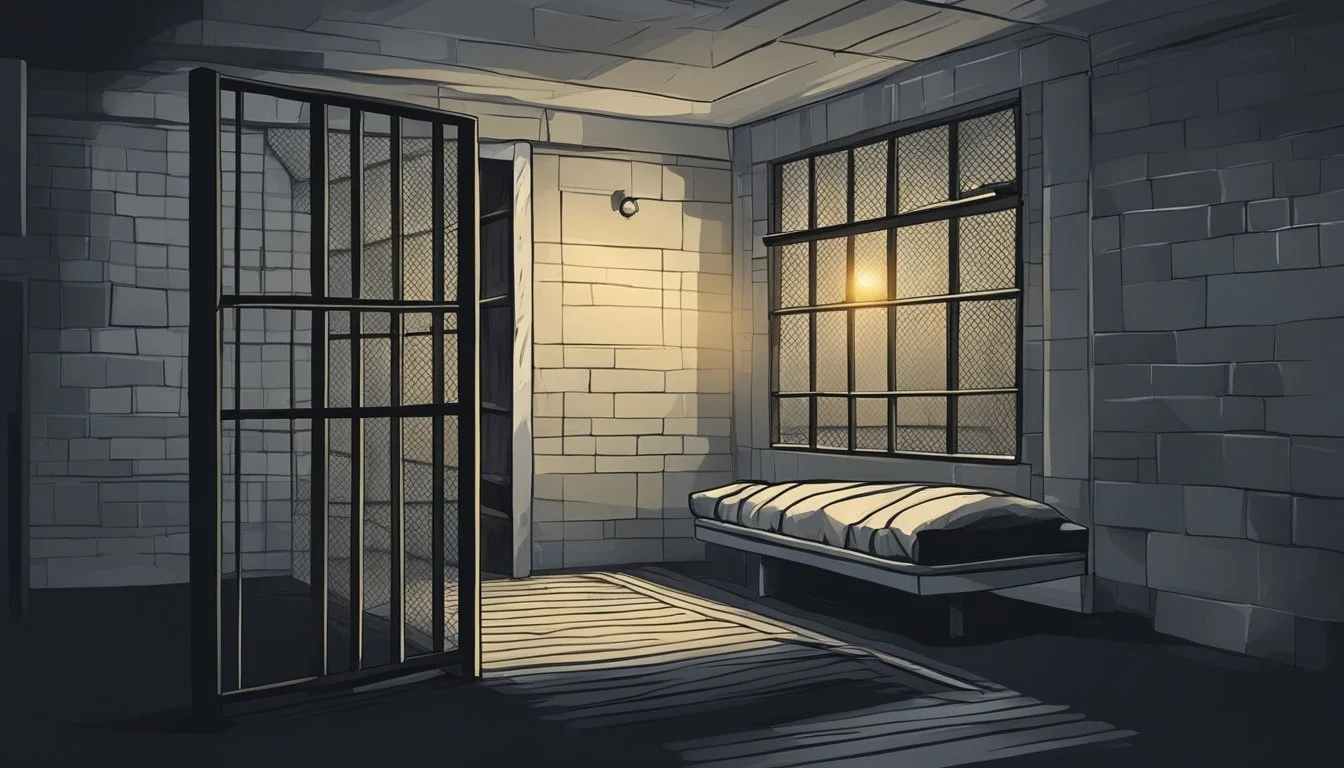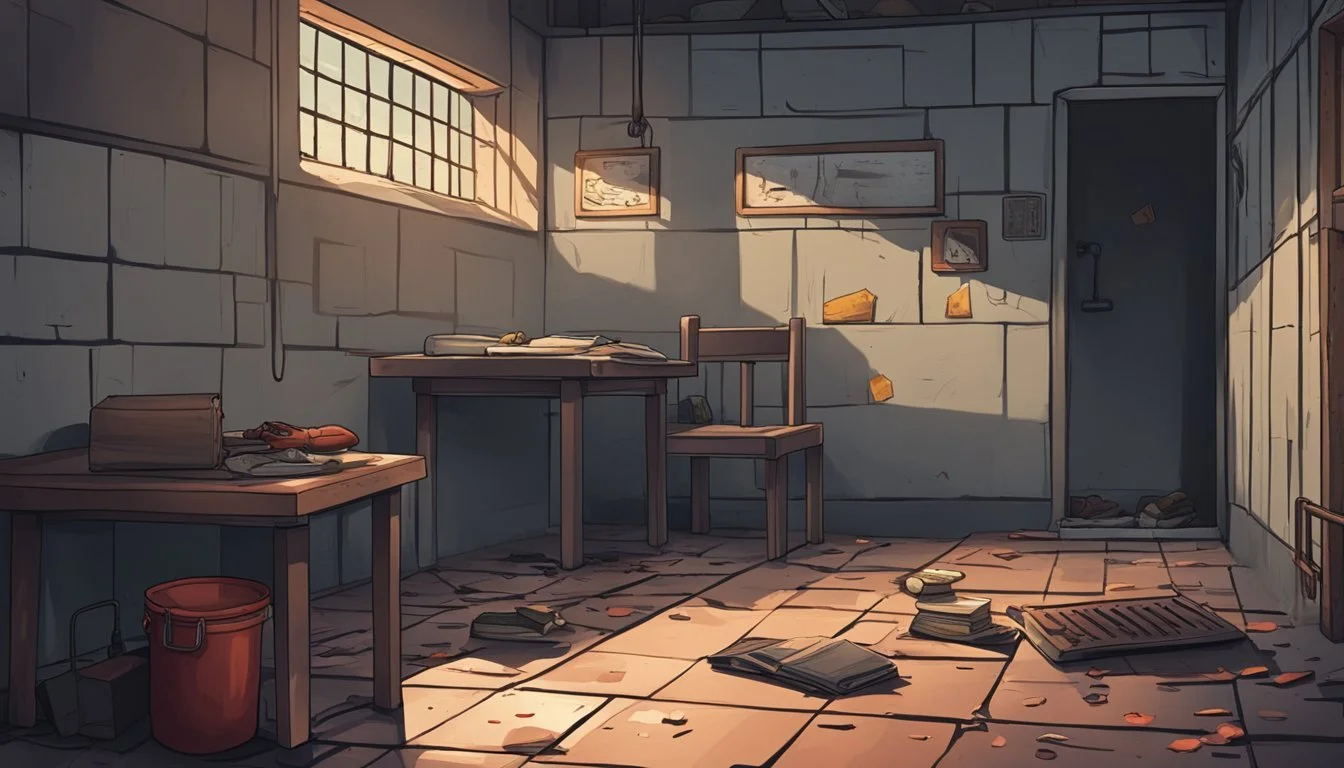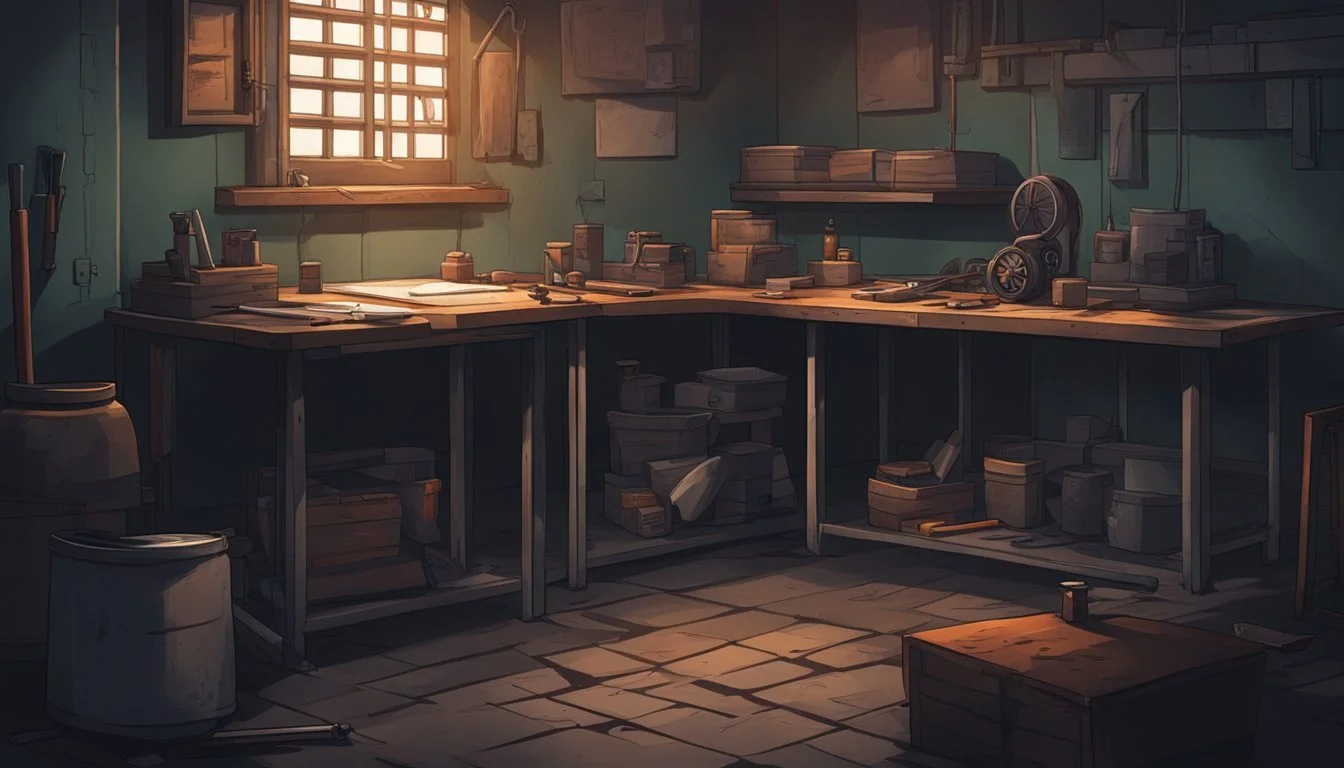Robert Berdella's Butchery Ceases: Kansas City Killer's Prison Death Marks End of Horrific Chapter
Robert Berdella, known as the "Kansas City Butcher," terrorized Missouri's largest city from 1984 to 1987. His reign of horror ended with his arrest in 1988, but the full extent of his crimes shocked the nation. Berdella kidnapped, tortured, and murdered at least six young men, subjecting them to unimaginable cruelty in his unassuming house on Charlotte Street.
On October 8, 1992, Robert Berdella died in prison at the age of 43, bringing final closure to one of Kansas City's darkest chapters. His death occurred at the Missouri State Penitentiary, where he had been serving consecutive life sentences without the possibility of parole. The official cause was reported as a heart attack, though some speculated about other potential factors.
Berdella's crimes were particularly disturbing due to the meticulous records he kept of his victims' suffering. His capture in 1988 came after one of his intended victims managed to escape and alert authorities. The subsequent investigation uncovered a trove of evidence that painted a horrifying picture of calculated brutality, earning Berdella his infamous moniker and a place among America's most notorious serial killers.
The Grim Tale of Robert Berdella
Robert Berdella's life trajectory took him from a small Ohio town to becoming one of Kansas City's most notorious serial killers. His early experiences and later endeavors provide context for understanding the man behind the gruesome crimes.
Early Life and Cuyahoga Falls Origins
Robert Berdella was born on January 31, 1949, in Cuyahoga Falls, Ohio. As a child, he struggled with poor eyesight and was often bullied by his peers. His father, a die setter for Ford Motor Company, had a strict disciplinary approach.
Berdella showed an early interest in medicine and chemistry. He performed amateur surgeries on small animals, foreshadowing his later sadistic tendencies. Despite his intelligence, he had difficulty forming social connections.
At 16, Berdella revealed his homosexuality to his parents, straining family relationships. This period marked a turning point in his life, pushing him towards isolation and darker interests.
Kansas City Art Institute and Westport Flea Market Endeavors
In 1967, Berdella enrolled at the Kansas City Art Institute. This move to Missouri would become pivotal in his criminal trajectory. During his time at the institute, he further explored his sexuality and developed an interest in cooking.
After leaving the institute, Berdella opened Bob's Bazaar Bizarre in Kansas City's Westport Flea Market. The shop specialized in occult items, jewelry, and oddities. It became a front for his criminal activities and a way to meet potential victims.
Berdella's business allowed him to blend into the community while harboring his dark secrets. He used his charm and the shop's eccentric atmosphere to lure young men, setting the stage for his horrific crimes.
Horrific Crimes Unveiled
Robert Berdella's crimes shocked Kansas City and the nation. His methodical approach to torture and murder left a trail of devastation in its wake.
Kidnapping and Torture Tactics
Berdella lured young men to his home under false pretenses. Once there, he drugged and restrained them. He subjected victims to extreme physical and sexual abuse over extended periods.
Berdella kept meticulous logs detailing his torture methods. These included electric shocks, injections of various drugs, and severe beatings. He often photographed his victims during their ordeal.
The killer's house on Charlotte Street became a prison for those he captured. Some victims endured weeks of torment before their deaths.
Profiles of the Victims
Berdella targeted vulnerable young men, often runaways or sex workers. His known victims included:
Jerry Howell, 19
Robert Sheldon, 23
Mark Wallace, 20
James Ferris, 25
Todd Stoops, 21
Larry Pearson, 20
These men came from diverse backgrounds but shared a tragic fate. Berdella's careful selection of victims helped him avoid detection for years.
Discovery of Evidence and Arrest
Berdella's crimes came to light when a victim escaped in April 1988. Chris Bryson jumped from a second-story window, wearing only a dog collar.
Police searched Berdella's home and found damning evidence:
Torture logs
Polaroid photos of victims
Human skulls and bone fragments
Investigators also uncovered items belonging to missing persons. This physical evidence, combined with Bryson's testimony, led to Berdella's swift arrest and conviction.
The Collector's Lair
Robert Berdella's unassuming Hyde Park home concealed horrific scenes of torture and murder. His meticulous record-keeping and photography documented the brutal acts committed against his victims.
Hyde Park House of Horrors
4315 Charlotte Street in Kansas City's Hyde Park neighborhood appeared ordinary from the outside. Behind its walls, Berdella transformed the residence into a chamber of horrors. The two-story house contained rooms where he imprisoned, tortured, and killed at least six young men between 1984 and 1987.
Berdella outfitted the home with restraints, tools, and chemicals used to subdue and torment his captives. He kept victims chained in the basement and bedroom for days or weeks. The house also stored the dismembered remains of his victims before disposal.
Neighbors had no idea of the atrocities occurring next door. Berdella maintained a facade of normalcy, running his curio shop and participating in the community watch program.
Torture Logs and Polaroid Pictures
Berdella obsessively documented his crimes through detailed logs and photographs. He kept a torture diary recording the abuse inflicted on each victim. The journal included times, dates, and descriptions of tortures administered.
Police discovered over 200 Polaroid pictures Berdella took of his victims. The images showed captives in various states of torture and mutilation. Some photos depicted corpses after death.
These meticulous records provided crucial evidence for prosecutors. The logs and photos revealed the extent of Berdella's sadistic acts and helped identify victims. His compulsion to document everything ultimately aided in his conviction.
The Legal Aftermath
Robert Berdella's arrest in 1988 set in motion a complex legal process. His case involved multiple charges, trials, and ultimately led to his imprisonment at Missouri State Penitentiary.
Court Trials and Convictions
Berdella faced charges for first-degree murder and second-degree murder. In December 1988, he pleaded guilty to the murders of Robert Sheldon and Mark Wallace. The court sentenced him to life imprisonment without the possibility of parole for 25 years.
In 1989, Berdella entered a plea bargain. He pleaded guilty to four additional counts of second-degree murder in exchange for avoiding the death penalty. This deal resulted in six consecutive life sentences.
The prosecution presented overwhelming evidence, including Berdella's detailed logs of his crimes and polaroid photographs of his victims.
Life in Missouri State Penitentiary
Berdella began serving his life sentences at Missouri State Penitentiary in Jefferson City. The facility, known for its harsh conditions, housed some of the state's most dangerous criminals.
In prison, Berdella maintained a low profile. He worked in the prison library and avoided confrontations with other inmates. Despite his attempts to blend in, his notoriety as the "Kansas City Butcher" followed him.
Berdella's health deteriorated during his incarceration. He suffered from high blood pressure and heart problems. On October 8, 1992, just four years into his sentence, Berdella died of a heart attack in the prison hospital.
Final Chapter: Prison Death
Robert Berdella's reign of terror came to an end behind bars. On October 8, 1992, the notorious Kansas City Butcher died in prison at the age of 43.
The cause of Berdella's death was a heart attack. This sudden cardiac event occurred while he was incarcerated at the Missouri State Penitentiary.
Berdella had served only four years of his life sentences when he passed away. His death marked the final chapter in a gruesome saga that had horrified Kansas City and the nation.
Some viewed his early demise as a form of justice, given the brutality of his crimes. Others felt his death prevented full accountability for his actions.
Regardless of perspective, Berdella's passing closed the book on one of the most disturbing criminal cases in Missouri history. The house of horrors on Charlotte Street would no longer cast a shadow over Kansas City.
Cultural and Criminal Analysis
Robert Berdella's case shocked Kansas City and left a lasting impact on the community. His crimes revealed disturbing psychological patterns and sparked intense media coverage.
Psychological Profile
Berdella displayed traits common among serial killers. He exhibited narcissistic tendencies and a desire for control. His crimes involved extensive planning and record-keeping. Berdella's interest in occult literature and satanism likely influenced his worldview.
He showed signs of sadism through his prolonged torture of victims. Animal abuse in his youth was an early warning sign. Experts noted his ability to compartmentalize, living a seemingly normal life while committing heinous acts.
Berdella's troubled childhood and experiences of bullying may have contributed to his criminal behavior. He struggled with his sexuality and harbored deep-seated anger.
Impact on Kansas City Community
The Berdella case shattered Kansas City's sense of safety. Residents were horrified to learn a serial killer had operated in their midst. Local police faced criticism for not detecting the crimes sooner.
Berdella's shop, Bob's Bazaar Bizarre, became a macabre tourist attraction. The community grappled with how to address the site's dark history.
Support groups formed for families of victims and survivors. The case prompted discussions about vulnerable populations and community vigilance. Kansas City implemented new initiatives to protect at-risk youth.
Representation in Media and Literature
Berdella's crimes have been the subject of numerous books, documentaries, and films. Notable works include "Rites of Burial" by Tom Jackman and "Butcher, Baker" by Jeralyn Merritt.
True crime podcasts have revisited the case, analyzing Berdella's motives and methods. Dramatizations often focus on the shocking details of his torture and murders.
Some portrayals have been criticized for sensationalizing the violence. Others have used the case to explore broader themes of evil and human nature. Berdella's story continues to captivate audiences, serving as a cautionary tale about the darkness that can lurk behind ordinary facades.
Remembering the Victims
Robert Berdella's crimes left deep scars on the Kansas City community and the families of those he murdered. Efforts to honor the victims and support their loved ones continue years after Berdella's death.
Tributes and Memorials
A memorial plaque was placed in Hyde Park, near where Berdella's house once stood. It bears the names of the known victims: Jerry Howell, Robert Sheldon, Mark Wallace, Larry Pearson, and Christopher Bryson. Local residents maintain a small garden around the plaque, often leaving flowers.
The Kansas City LGBTQ+ community holds an annual vigil for the victims, as several were young gay men. This event raises awareness about violence against LGBTQ+ individuals and promotes healing.
A scholarship fund was established at a local community college in memory of the victims. It supports students pursuing careers in criminal justice or social work.
Family Perspectives and Healing
Victims' families have spoken out about their ongoing struggles with grief and trauma. Jerry Howell's parents advocated for improved missing persons procedures after police initially dismissed their son's disappearance.
Christopher Bryson, the survivor who escaped and led to Berdella's arrest, has shared his story to help other sexual assault survivors. He emphasizes the importance of mental health support for victims of violent crimes.
Some families chose to maintain privacy, while others became active in victim support groups. These organizations provide counseling and resources to those affected by similar crimes.








